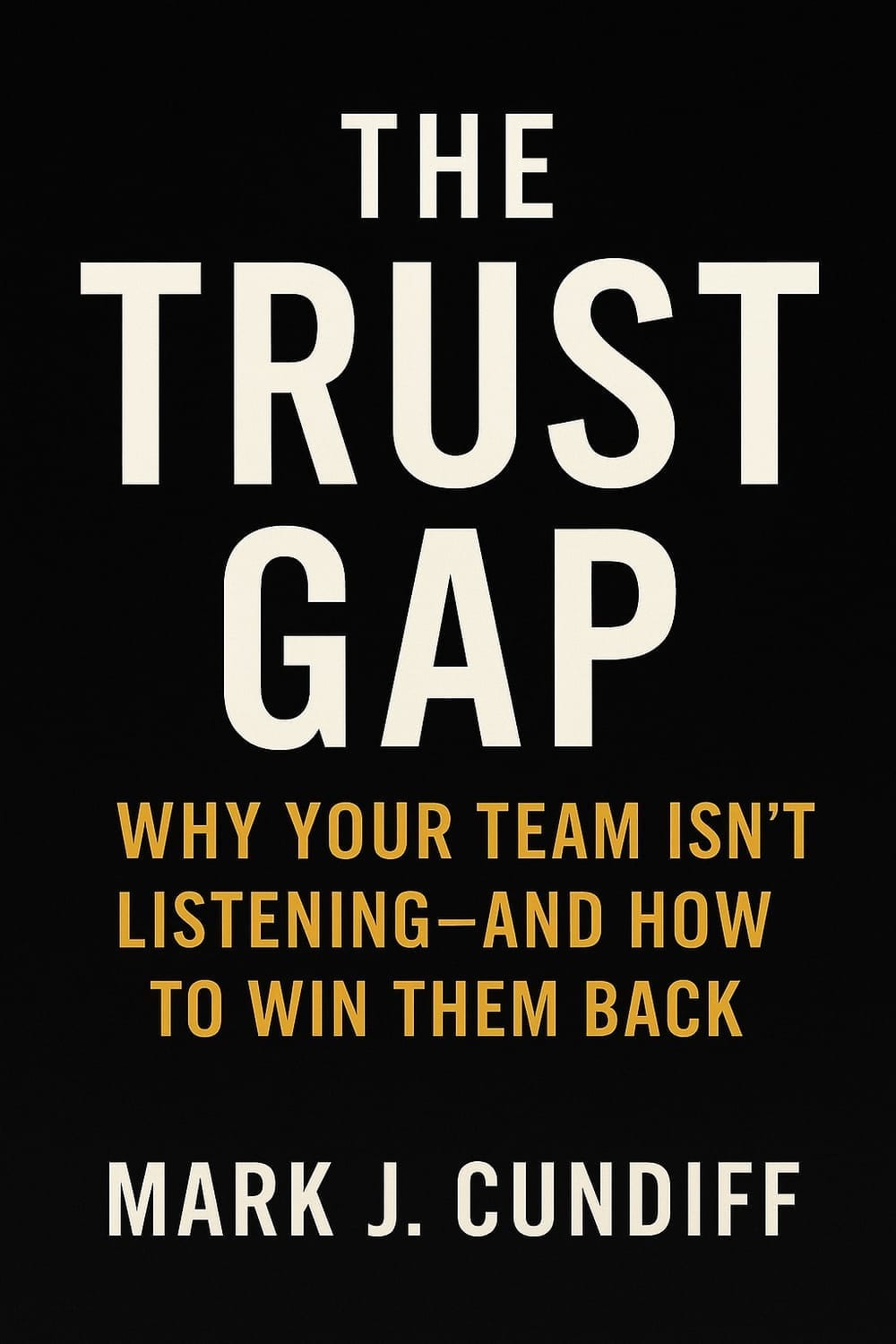First, Break All The Rules by Marcus Buckingham - Book Summary
First, Break All the Rules: What the World's Greatest Managers Do Differently
How the Best Unlock Talent, Drive High Performance, and Lead with Clarity
"The role of a manager is not to perfect people. It's to draw out what was already there." -Marcus Buckingham and Curt Coffman
The Meeting That Changed Everything
It started like any other Monday check-in.
Angela, the operations director at a fast-growing logistics firm, was checking performance metrics with her team lead, Chris. He was sharp, dependable, and had been with the company for nearly three years. But lately, his spark was fading.
Angela, trained in top programs, applied her knowledge. She offered more coaching, gave clearer directions, and reviewed recent training materials. Still, nothing changed.
Finally, she asked, "Chris, what part of your job energizes you the most?"
Chris paused. "Honestly? I haven't felt energized in a while. I'm not doing what I'm best at. I've got enough training to survive, but I'm not thriving."
That moment made Angela think of a classic book she hadn’t read since business school. First, Break All the Rules, a popular management book from the Gallup Organization, is based on extensive research. What she discovered reshaped her approach—and helped Chris flourish again in a completely different role.
The book is based on a detailed study of great managers. It shows that the best managers don’t stick to conventional wisdom; they break it.
Key Takeaways
Talent is the starting point. It can't be trained—only recognized and unleashed.
The right outcomes matter more than the right process.
Focusing on strengths, not weaknesses, builds lasting performance.
Fit beats promotion. The best reward is meaningful, aligned work.
When supervisors are involved in employee development, engagement increases, and turnover drops.
Great managers personalize, prioritize outcomes, and break rules that no longer serve.
The 12 Essential Questions That Predict High Performance
Before discussing the four management keys, the book shares Gallup's key measure of workplace health: 12 questions. These questions predict if your team is engaged, high-performing, and likely to stay. If most answers are "yes," you’re not just leading—you’re building a strong performance culture.
Let's explore them more deeply:
1. Do I know what is expected of me at work?
This is about clarity, not micromanagement. Clear expectations set people free to succeed. Ambiguity leads to anxiety.
2. Do I have the materials and equipment I need to do my work right?
Even the most talented employee can't thrive without the right tools. Friction and delay erode confidence and momentum.
3. At work, do I have the opportunity to do what I do best every day?
This is the core of engagement. Are they doing work aligned with their strengths, or just grinding through tasks that drain them?
4. In the last seven days, have I received recognition or praise for doing good work?
Timely, sincere recognition reinforces behavior and boosts energy. It doesn't have to be formal—just real.
5. Does my supervisor, or someone at work, seem to care about me as a person?
Employee opinions are shaped more by their relationship with their immediate supervisor than by pay or perks.
6. Is there someone at work who encourages my development?
Growth is a magnet. When employees feel stagnant, they disengage or leave. Career lessons must be constant.
7. At work, do my opinions seem to count?
This builds ownership. People don't have to get their way, but they do want a voice.
8. Does the mission or purpose of my company make me feel my job is important?
Statements like "Your work makes this outcome possible" can turn any task into a meaningful contribution.
9. Are my co-workers committed to doing quality work?
Team culture matters. Excellence is contagious—so is apathy.
10. Do I have a best friend at work?
This may sound soft, but belonging boosts performance. People stay where they feel connected.
11. In the last six months, has someone talked to me about my progress?
Feedback should be ongoing, not saved for the annual review.
12. This past year, have I had opportunities to learn and grow?
Learning is retention. If they're growing, they're staying.
The 4 Keys of Great Managers
Key 1: Select for Talent
Experience and education aren't enough. Start with talent.
Each role needs a special mix of patterns. This includes how a person thinks, connects with others, and pushes themselves ahead. Managers must learn to spot these patterns, not rely solely on resumes.
For example, in entrepreneurial firms, employees must adapt quickly. However, not everyone has the same tolerance for ambiguity or customers' needs. Some thrive in chaos. Others wither.
Using tools like the CliftonStrengths Assessment helps you spot an employee's talent right away.
Lesson: Look beyond experience. Hire for who they are—not just what they've done.
Key 2: Define the Right Outcomes
Don't prescribe steps. Align around results.
Micromanagement kills initiative. World's greatest managers don't dictate "how"—they define "what."
The best managers say, "This is the goal. Get there your way—as long as it meets the standard, aligns with our company's goals, and serves the customer's needs."
This gives space for different styles, autonomy, and innovation.
Lesson: Set clear expectations, then give freedom to succeed.
Key 3: Focus on Strengths
Stop trying to fix people. Start developing what's strong.
Spending all your energy on fixing weaknesses is like training a goldfish to climb a tree.
Instead, cast your team members in roles that activate their strengths. Let the detail-minded analyst refine the data. Let the relational rock star close the deal.
And yes, spend more time with your best people. Why? Because that's where you get exponential return.
Lesson: Strengths aren't just a feel-good strategy—they're your vital performance lever.
Key 4: Find the Right Fit
Not every promotion is progress. Alignment matters more.
One of the biggest missteps in leadership? Promoting someone out of their zone of excellence.
The best managers reward results, but they don't assume every high performer wants more direct reports or a corner office. Instead, they offer growth through mastery, not just hierarchy.
Broadband pay structures, growth paths, and tailored roles help avoid the rate of turnover caused by misaligned advancement.
Lesson: Fit isn't about status. It's about staying in your strength zone.
FAQ: Leading with the Four Keys
Q: Can talent really outperform training?
Yes. You can build skills, but you can't install talent. If someone doesn't have a feel for sales, no script will make them thrive. Start with wiring, then add skill.
Q: What if I can't move someone into a better-fit role?
Redesign elements of their current role. Let them lead a project, mentor someone, or shift tasks. It doesn't have to be a new job—just better alignment.
Q: How often should I revisit the 12 questions?
Quarterly. They're your cultural dashboard. Revisit them like you would a scorecard or team survey.
Q: How do I know if I'm micromanaging?
If you're constantly prescribing how to do something rather than defining what success looks like, you may be over-controlling and under-trusting.
Q: What if someone wants to be promoted, but it's not the right fit?
Be honest. Offer them career lessons that focus on long-term growth over short-term titles. Then design alternative growth paths.
Final Word: Lead with Courage, Not Convention
Great management isn't about charisma or generous benefits. It's about clarity, alignment, and courage.
Courage to:
Hire based on who people are, not just what they've done.
Let go of micromanagement and trust people with outcomes.
Spend your best energy on your best people.
Say no to promotions that aren't the right fit.
If you want a high-performance team, start by asking the right questions—and then breaking the rules that hold your team back.
This isn't about leadership theory. It's about what actually works.
Join over 3,900 Fellow Leaders reading The Learning To Lead Newsletter each week!
Recent Articles

Join over 3,900 Fellow Leaders reading The Learning To Lead Newsletter each week!
©2025 Learning To Lead | Helping Good Leaders Become Great Leaders


